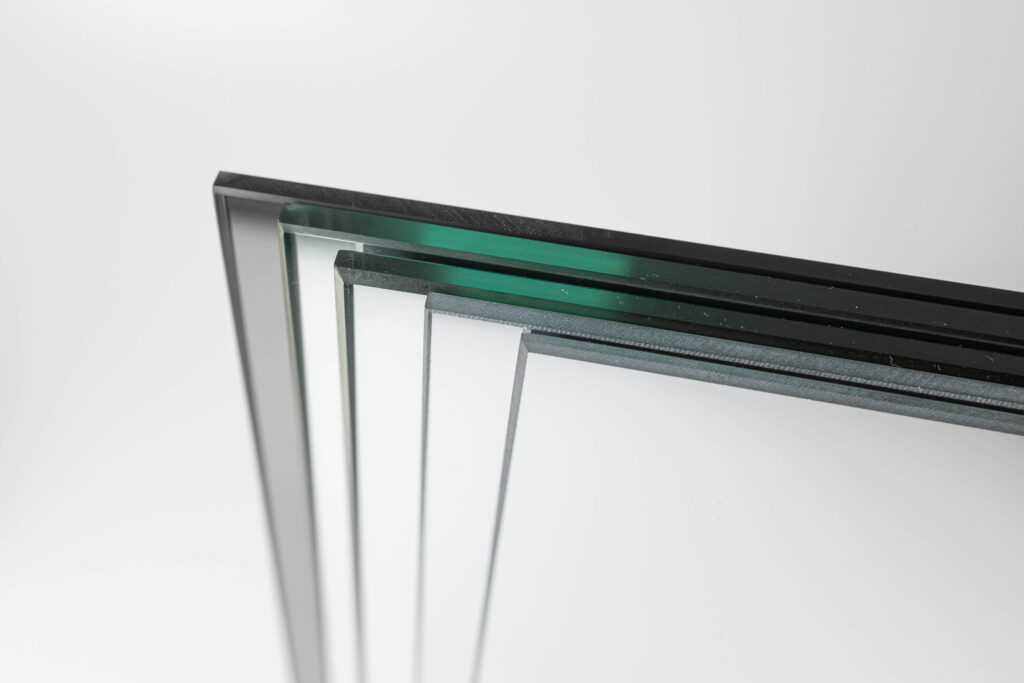
Single glazing is a versatile and easy-to-use glazing material. It has been used in all types of properties across the UK for hundreds of years and is still in use today.
Single glazing is simply a sheet of glass, with a standard thickness ranging from 4-5 mm, though it can be produced in thicknesses from 3-12 mm.
There are also companies that can make glass as thin as 1 mm or thicker than 12 mm; however, this type of glass would be categorised as specialty glass rather than standard single glazing.
The single glazing is simple product yet it has many varieties, options and alternative to choose from.
In this in-depth article, we aim to cover all possible options for single glazing, including its alternatives.
In modern times, we all desire a warm, quiet home, and since a single pane of glass offers low energy efficiency and sound insulation, let’s explore alternatives that may not be much thicker than single glazing.
Types of single glazing
Single glazing in UK properties can be original crown or cylinder glass, float glass, or restoration glass. Restoration glass is a newer type of glass made using traditional production methods to replicate the old wavy finish.
Float glass is the most common type of glass. If you have UPVC or new timber windows, they are most likely fitted with float glass.
All other varieties and types of single glazing, such as tempered glass, begin as float glass but are later processed to achieve specific safety or visual features.

Different production methods – From wavy glass to flat and even glass
If your property has original single glazed windows with a cracked glass pane, you might be interested to learn a bit about the history that your single-glazed window could be part of.
Below is a timeline of glass production methods.
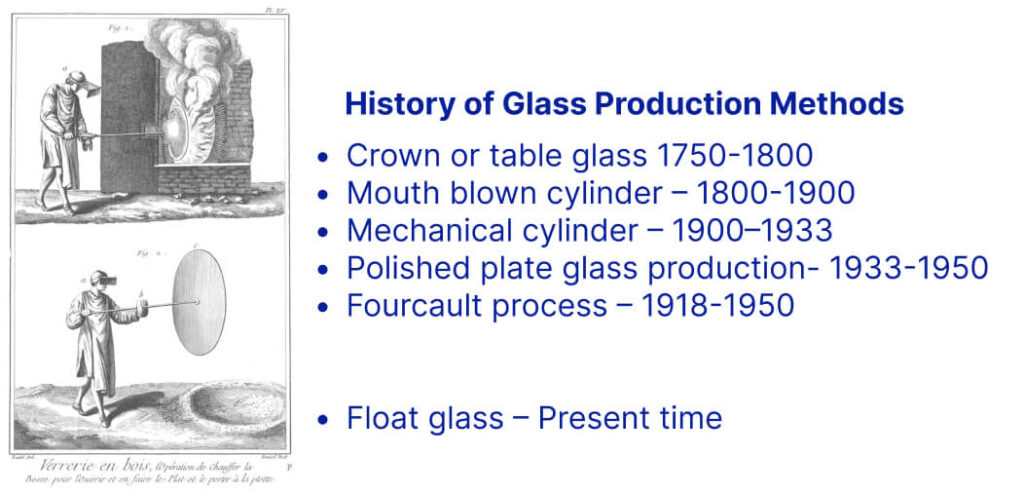
Five out of the six methods are rarely used nowadays, mostly reserved for glass restoration purposes, while the float glass production method dominates the market.
Historic panes of glass — characterised by wavy textures, imperfections, and slight visual distortions
Before the invention of the float glass method, glassmakers created window glass using either the crown method or the mouth-blown cylinder method, by spinning molten glass into discs or blowing it into cylinders and flattening it by hand.
This meticulous process resulted in each pane having distinctive imperfections that bring a touch of history and craftsmanship to the glass.
These days, glassmakers still recreate these older styles for Grade 1 listed buildings, where authenticity is a must.
Restoration glass suppliers UK
There are some companies that still make this type of glass today.
Company Name | Location | Specialisation | Product Range |
Hereford Glass Ltd | Hereford | Produces ‘Wibble Restoration Glass’ with varying levels of distortion, suitable for historic window restoration. | Wibble Restoration Glass (Cat 2 and Cat 3) |
Tatra Glass | Loughborough | Supplies hand-made conservation-grade sheet glass, including mouth-blown and machine-drawn options, for heritage restoration projects. | Heritage Mouth Blown Glass, Heritage Drawn 3, Heritage Drawn 3+, Heritage Drawn 4.5 |
Histoglass | London | Offers authentic period glass made using traditional techniques, suitable for historic property restorations. | Period Glass, Mouth Blown Cylinder Glass, Hand Drawn Glass |
SCHOTT UK | Stafford | Produces historically authentic glass, such as GOETHEGLAS and RESTOVER®, recreating the irregular surfaces of 18th to early 20th-century glazing. | GOETHEGLAS, RESTOVER, RESTOVER plus, RESTOVER light, TIKANA |
Pearsons Glass | Liverpool | Offers a wide range of mouth-blown and machine-made restoration glasses, catering to restoration professionals and heritage projects. | Mouth-Blown Glass, Machine-Made Restoration Glass |
What if I need original glass rather than a replica?
What we do as a window restoration company, we retain old, original glass panes that are replaced with vacuum-insulated glazing during restoration projects.
We then use these original panes to replace cracked glass in other historic windows.
You can also look for glass reclamation or sash windows online. There are a number of specialised websites focused on reclamation, and you may also find something on Gumtree or eBay.

Float glass – workhorse of single glazing
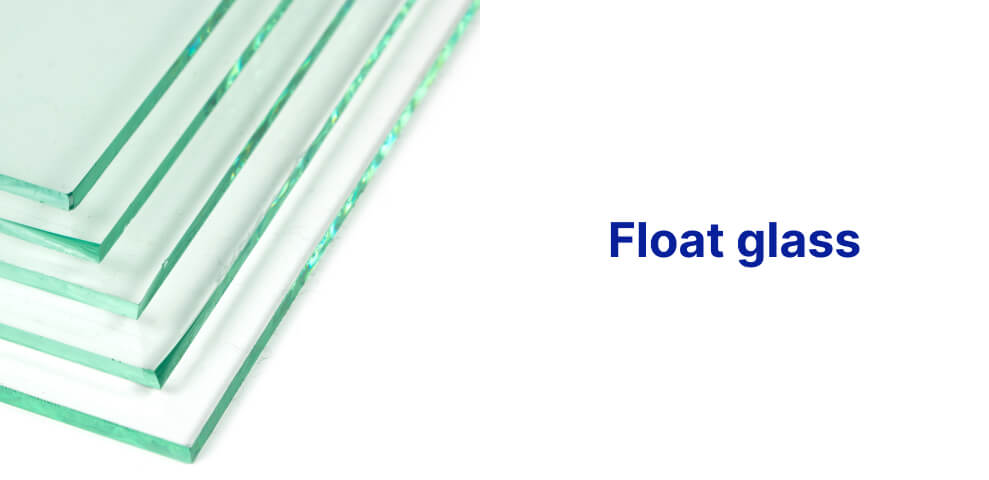
Float glass is the workhorse of single glazing.
It’s clear, affordable, and does exactly what you need it to do: let the light in and give you a view.
While it doesn’t add much in terms of insulation, it’s perfect for rooms where you just need basic functionality.
Float glass became popular in the mid-20th century, bringing a new level of smoothness and uniformity to window glass. Even today, it’s a staple because it’s simple, reliable, and easy to produce.
Float glass is the building block for all other types of single and insulated glazing.
Tempered (Toughened) glass
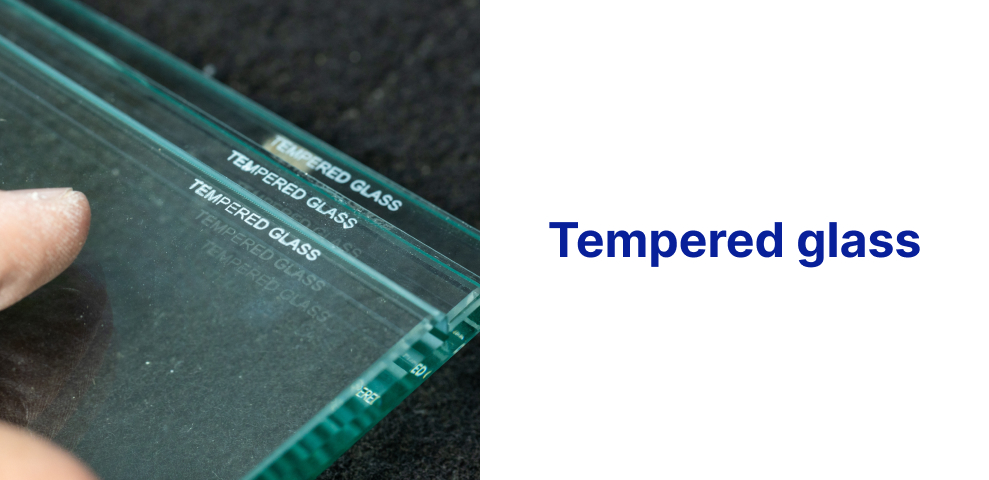
It’s four to five times stronger than regular single glazing, making it a smart choice for ground-floor windows, doors, and places where glass might get a few knocks. This type of glass can be later used in manufacturing of toughened double glazing.
One major benefit is that when broken, it breaks into small round pieces rather than sharp shards, which greatly improves safety.
For busy households or public spaces, tempered glass brings peace of mind without sacrificing style.
Low-iron glass
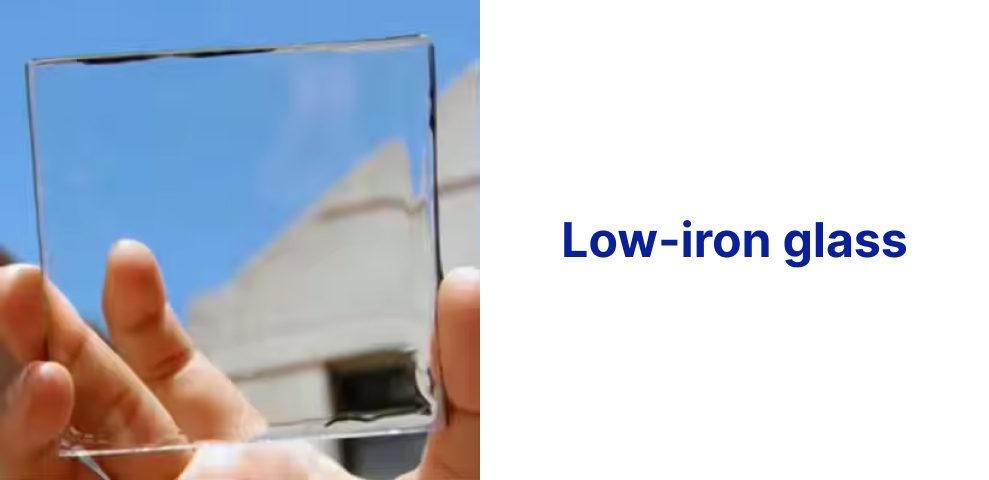
If you want the clearest, brightest view possible, low-iron glass is your best friend.
Unlike regular glass, which has a slight greenish tint, low-iron glass lets light pour in without any colour distortion.
This makes it ideal for spaces like sunrooms or conservatories, where you want the full effect of natural light.
Its pure clarity and colour accuracy make it a favourite in art galleries and stylish storefronts. It’s ideal anywhere a crisp, true-to-life view is needed.
Patterned glass
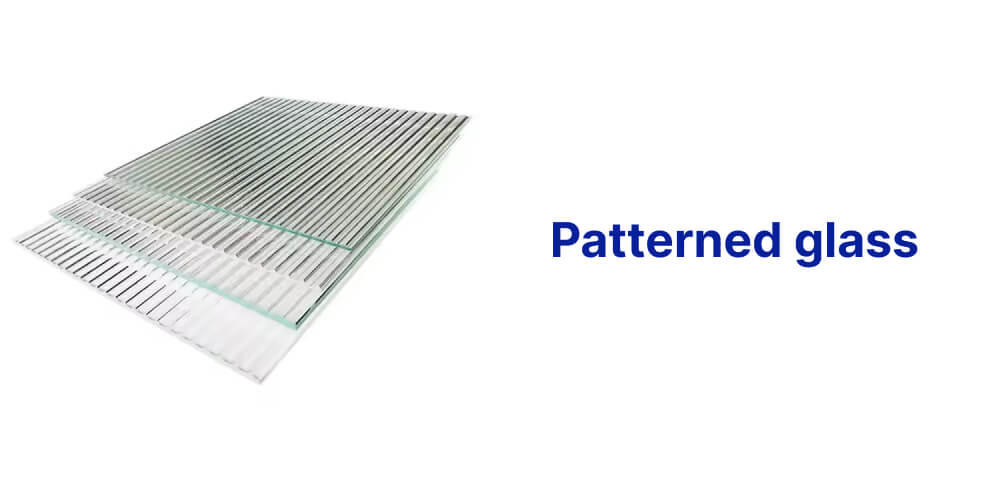
For those spots where you want privacy but don’t want to block the light, patterned glass is a fantastic option.
It adds texture to a window and creates a soft, diffused glow.
This effect is perfect for bathrooms, entry doors, or any space where you’d like a bit more privacy.
Patterns range from classic frosted designs to bold, modern shapes. This lets you find a style that suits your taste while still allowing light to filter through.
Fire-rated glass
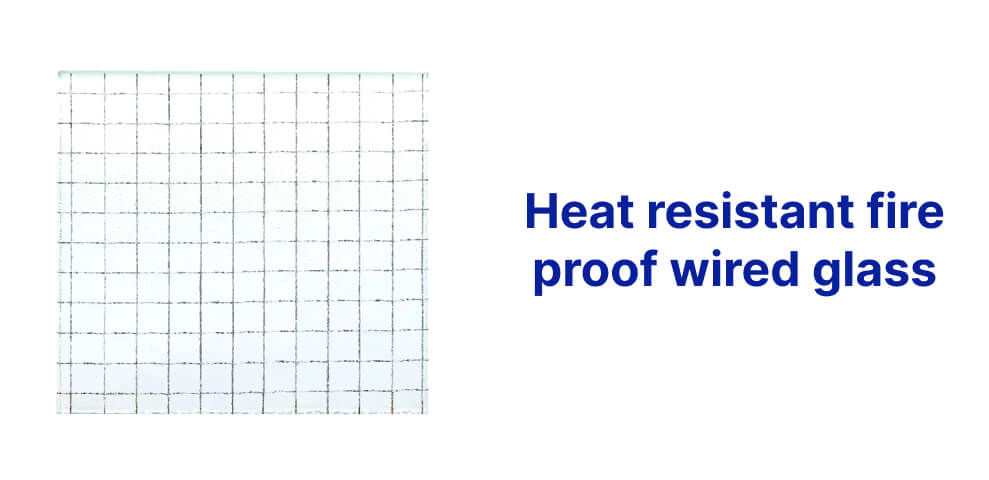
Fire-rated glass isn’t only about appearance — it’s engineered with safety in mind.
This type of glass is designed to withstand high temperatures, making it essential in places like stairwells, between a garage and the main house, or anywhere fire safety regulations apply.
It may not add extra insulation, but it plays a vital role in preventing fire from spreading, which is especially important in larger or multi-level homes.
Tinted glass

Tinted glass offers a subtle way to cut down on glare and heat.
If you have a room that gets a lot of direct sunlight, like a bright living room or sunroom, tinted glass can make it more comfortable by softening the intensity of the light.
Plus, it offers a touch of privacy for street-facing windows and helps reduce UV damage to furnishings over time, making it a practical and stylish choice for sunny spaces.
The advantages of single glazing – not many
There are not many advantages of single glazing, but there are few:
Cost
The cost of float glass in the UK is around £35 per square meter, while toughened float glass costs approximately £70 per square meter. It is also cheaper than any insulated glazing.
Type of Glazing | Description | Estimated Cost (per m²) | Key Points |
Single Glazing | 4mm Float Glass | £35 – £70 | Cheapest option, minimal insulation |
Double Glazing | 4mm + 4mm panes with 12-16mm air gap | £120 – £150 | Good insulation, suitable for most homes |
Triple Glazing | 4mm + 4mm + 4mm panes with 12mm air gaps | £150 – £200 | Superior insulation, higher energy savings, more effective in colder areas |
Vacuum Glazing | Two thin panes with a vacuum gap between them | £300 – £400 | Exceptional insulation in a thinner profile, often equal to triple glazing |
Easy to sourcing, cut and install
Since it is mass-produced and serves as a basic building material, float glass can be purchased from any building store, online, or from your local glazing supplier.
It is also easy to cut to measure—you can do it yourself or order the glass in custom dimensions. All of this adds to the convenience of single glazing.
Lightweight
Very obvious information, but we warned you, this is an in-depth article.
Single glazing is lighter than double or triple glazing, making it easier to handle, transport, and install.
This can be particularly useful in smaller structures or temporary installations where heavy-duty insulation isn’t essential.
Type of Glazing | Total Glass Thickness | Weight (kg/m²) |
Single Glazing | 4 mm | 10 kg/m² |
Double Glazing | 8 mm | 20 kg/m² |
Triple Glazing | 12 mm | 30 kg/m² |
Disadvantages of single glazing
Thermal inefficiency (U-value)
One of the most noticeable issues with single glazing is its poor thermal insulation for windows.
Single-glazed windows offer limited insulation, as their high U-value means they’re not great at keeping heat inside.
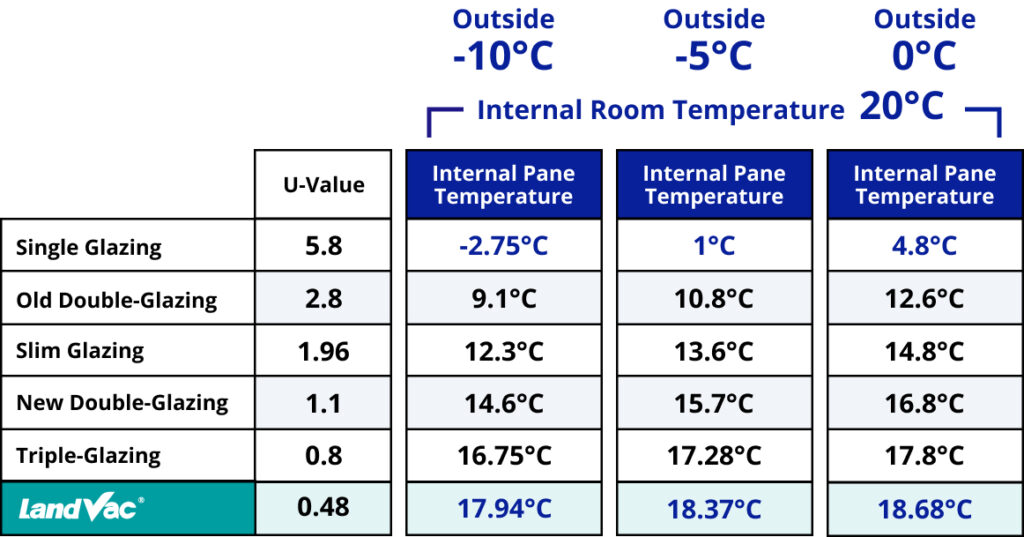
This becomes especially clear in winter when rooms can feel colder as warm air quickly escapes through the thin glass.
Homeowners often end up using more energy to heat these areas, which can drive up energy bills.
Sound insulation challenges
Single glazing also falls short in noise insulation. With only one glass pane, it doesn’t do much to block out noise pollution, so external sounds like traffic, construction, or lively neighbours are more easily heard indoors.
For homeowners in busy areas, the lack of sound insulation can disrupt the tranquility of a space, making it a significant drawback compared to double glazing, which creates a buffer against noise.
Condensation issues
Condensation is another common problem with single glazing.
When warm indoor air hits the cold surface of a windowpane, moisture collects on the glass, forming tiny droplets.
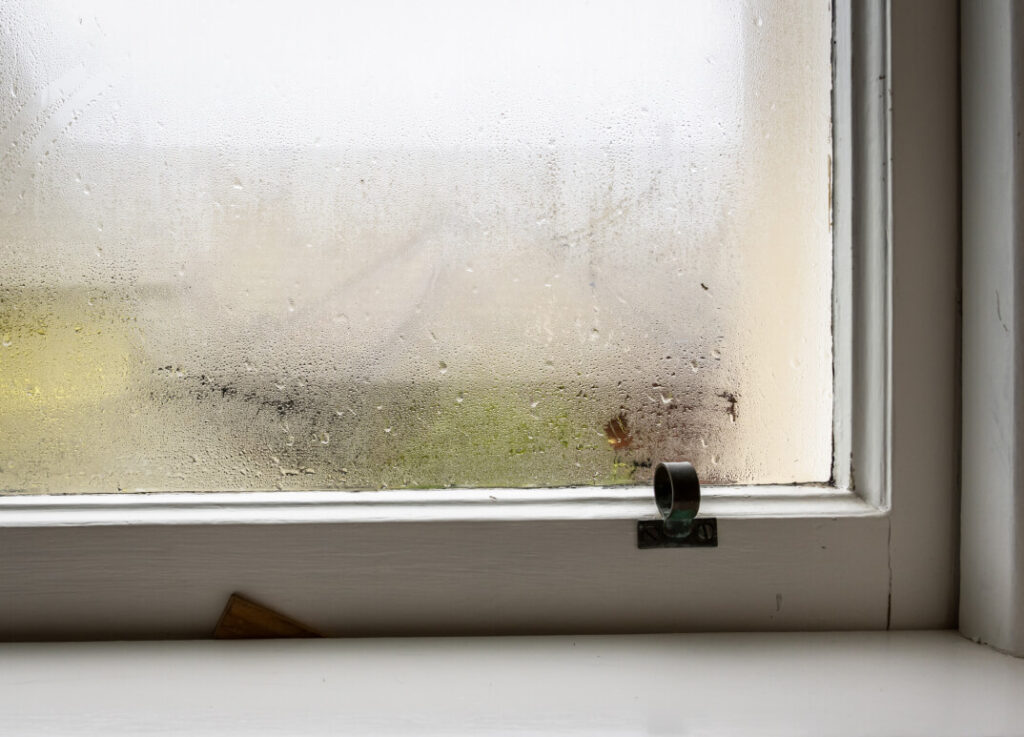
Over time, this can lead to issues like black mould on windows, water damage, and wood rot on timber frames.
While opening windows or adding ventilation can help, it’s often hard to fully eliminate condensation with single glazing, which makes it a constant consideration for homeowners.
Durability and security concerns
Single-glazed windows, especially traditional crown glass, are more fragile than their modern counterparts.
They break more easily, which can raise concerns about both security and durability.
Older, original panes in wooden windows can crack even without impact, due to the subtle movement of the timber as it expands and contracts with seasonal changes.
Comfort in extreme weather conditions
In homes with single glazing, extreme temperatures become more noticeable indoors. In winter, rooms can feel colder, and in summer, they can get uncomfortably warm.
This often leads homeowners to rely more on fans or heating, affecting both comfort and energy costs, and making it harder to maintain a stable indoor temperature.
Alternatives to single glazing
Vacuum insulated glass (VIG)
Vacuum insulated glass (VIG) is a great option if you want top-notch insulation without replacing or single glazed windows.
It is the thinnest double glazing and it ideal for period properties where thick glazing would look out of place.
VIG uses two glass panes with a vacuum layer in between, which blocks almost all heat transfer and adds soundproofing benefits, too.
Though it’s usually more expensive than other options, VIG can be well worth the investment.
If you’re looking to boost thermal efficiency while keeping the original look of your windows, VIG offers a great balance of function and style.
List of projects where our team has replaced single glazing with vacuum-insulated glass
The windows in these properties were originally single-glazed, and our team has re-glazed them with VIG (Vacuum Insulated Glass).
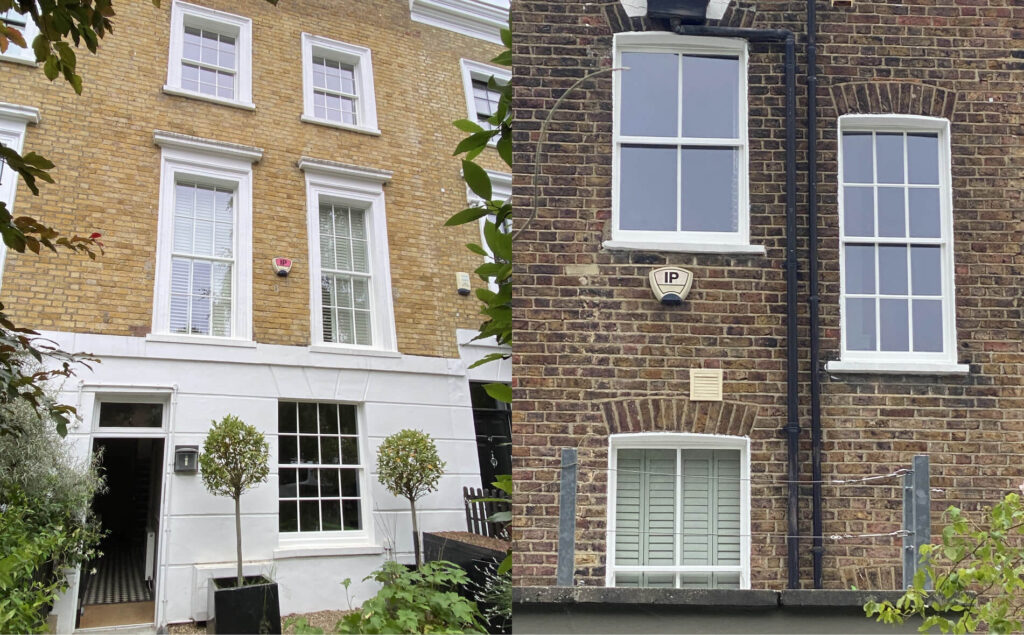
Sash Window Refurbishment & Double Glazing Regent’s Park
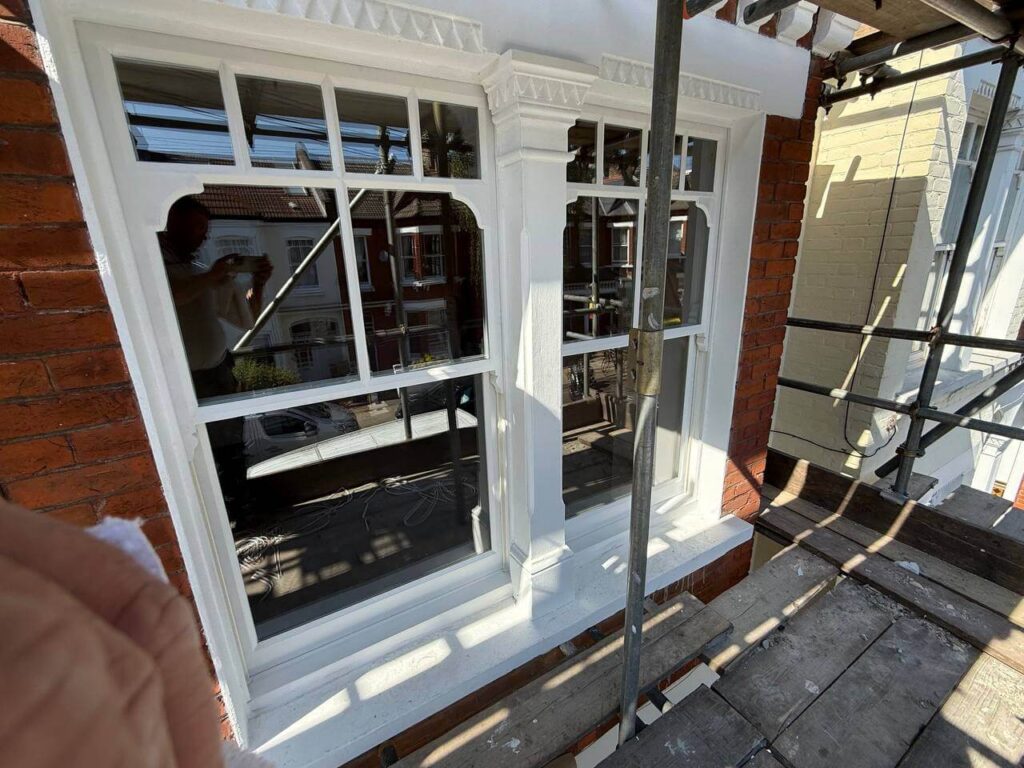
Edwardian sash windows reglazing
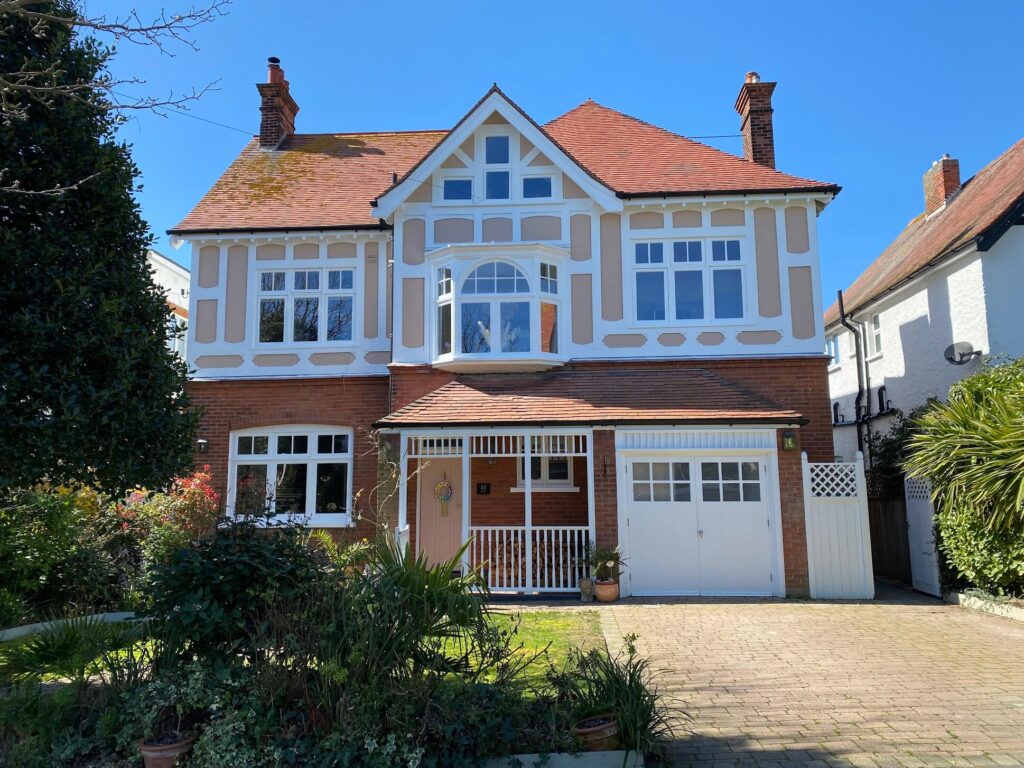
Wooden windows double glazing in Frinton-on-Sea

Sash windows restoration in West Essex

Double glazing Listed Grade 2 building
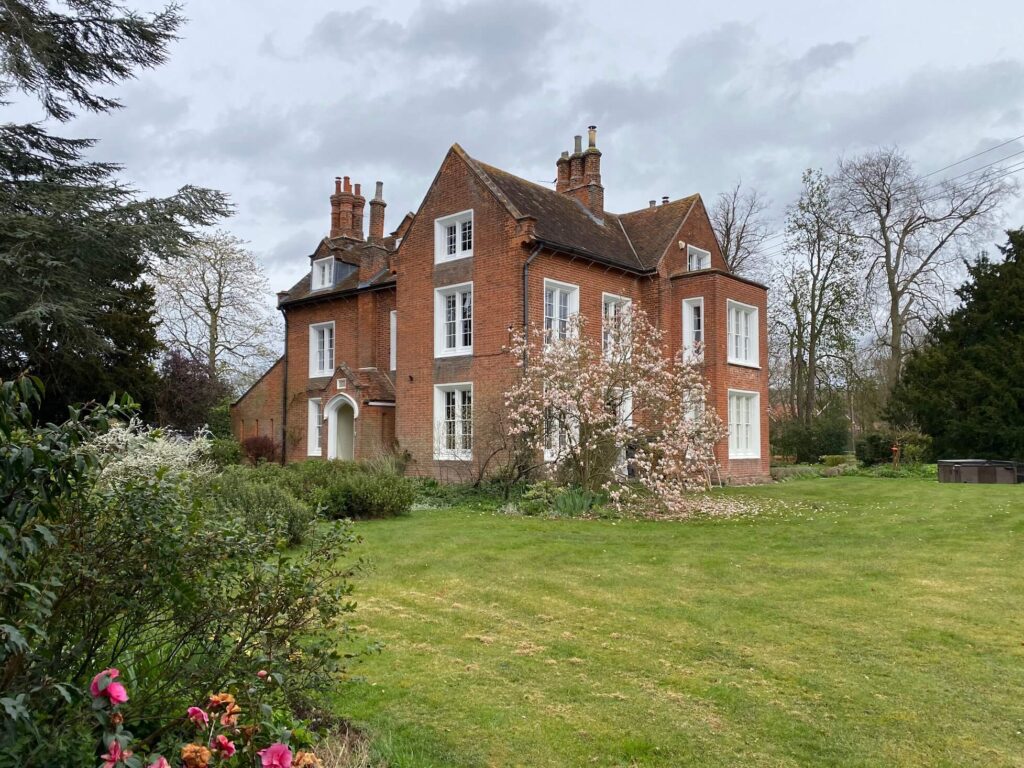
Retrofit double-glazing Essex
Regulatory considerations and compliance
In the UK, safety and conservation regulations are crucial for preserving the historical character of windows in period buildings while ensuring they meet modern standards.
Listed buildings and those in conservation areas often come with specific guidelines to retain original features, including single-glazed windows.
Safety glass regulations call for safety glass in certain high-risk areas like doors, low windows, and bathrooms.
This usually means using tempered or laminated glass to help prevent injury if the glass breaks. This requirement may affect single-glazed windows in these areas if they don’t meet current safety standards.
For listed properties, even minor window modifications typically require listed building consent.
Changes are expected to retain the look and materials of the original features closely. Conservation officers often support discreet options like slimline double glazing or secondary glazing to enhance insulation for windows without altering the building’s historic appearance.
Energy performance certificates (EPCs) add another layer of consideration.
Listed buildings and properties in conservation areas don’t usually have to meet mandatory EPC requirements. However, energy efficiency upgrades are encouraged, as long as they don’t affect the property’s historical character.
Measures like draught-proofing, thermal films, or secondary glazing can improve EPC rating subtly. Environmental sustainability is also increasingly prioritised, with councils recommending efficient upgrades like Low-E coatings, which align with EPC goals while preserving heritage value.
By consulting with conservation officers and adhering to guidelines, property owners can navigate these regulations effectively, achieving a balance between energy efficiency, safety, and historical preservation.
Conclusion
Balancing energy efficiency with historical preservation in period properties can be challenging, especially with single glazing.
While single-glazed windows offer unique charm and authenticity, they often fall short in insulation and soundproofing.
Subtle upgrades like double glazing retrofit, draught-proofing, secondary glazing, and thermal films improve efficiency without altering original windows.
For those considering more impactful changes, vacuum insulated glass offer modern benefits with minimal aesthetic compromise.
FAQ
Do I really need double glazing?
Double glazing offers substantial benefits in insulation, noise reduction, and energy savings, which can make it a worthwhile investment, particularly in colder climates or busy areas.
While not essential, it’s highly effective in improving home comfort. For period properties, alternatives like secondary glazing or slimline double glazing may allow you to retain the original look while gaining some modern advantages.
How much heat is lost through single glazed windows?
Single-glazed windows can allow up to 20% of a home’s heat to escape, as single panes offer minimal insulation compared to double glazing.
This reduced insulation can lead to higher energy costs, as heat is lost more readily, making it challenging to maintain a comfortable indoor temperature in colder months.
Does UK law forbid the use of single-glazed windows?
Single glazed windows are not illegal in the UK, and they remain standard in many period properties and conservation areas. For listed buildings, planning restrictions often favour single glazing to preserve historical features.
However, in new builds and renovations, building regulations encourage double glazing to meet modern energy efficiency standards.
Do you need a FENSA certificate for single glazed windows?
A FENSA certificate is typically required when installing new windows that need to meet energy efficiency standards, such as double glazing.
Single glazed windows in older or listed properties usually don’t require FENSA certification unless there’s a specific regulatory update to the frames or glazing that falls under current building standards.
Can you put double glazing in single glazed windows?
Yes, in many cases, double glazing can be retrofitted into existing single-glazed window frames if they’re structurally sound.
Read more articles
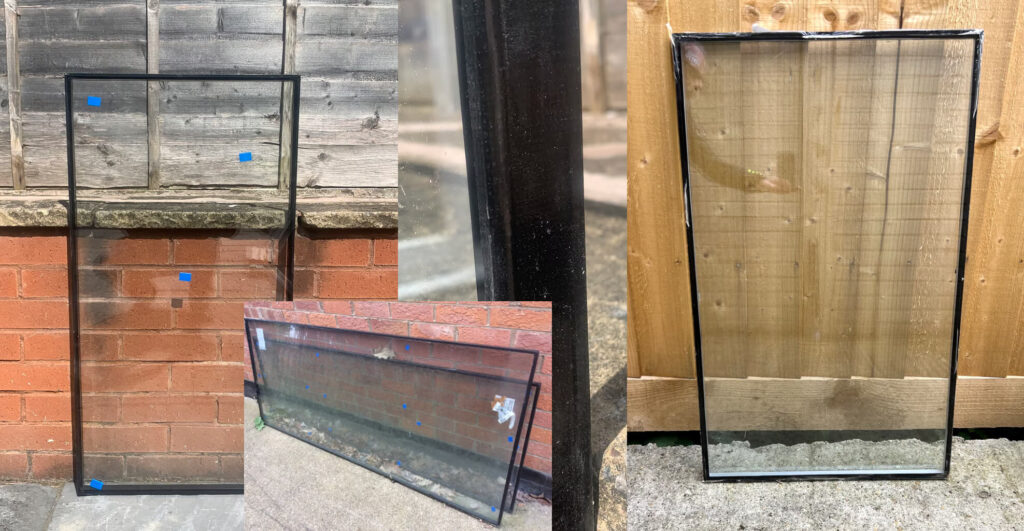
Insulating glass for windows and doors
Insulating glass for windows and doors
Safety glass regulations, UK
Safety glass regulations, UK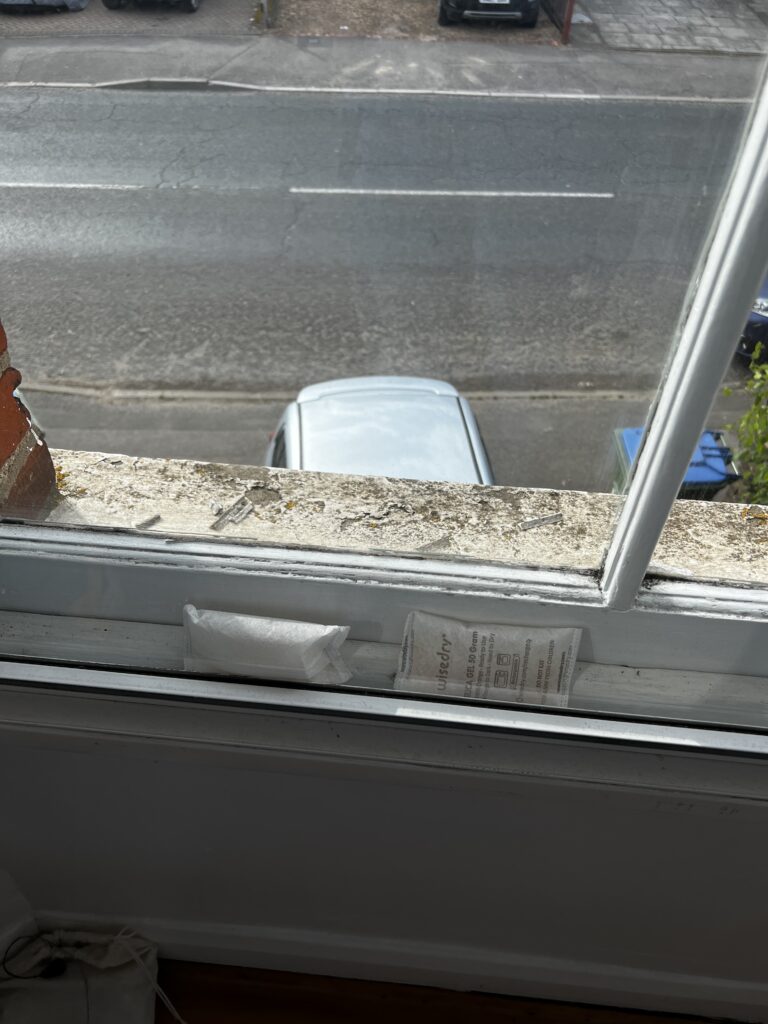
How to stop condensation build-up between secondary glazing and windows
How to stop condensation build-up between secondary glazing and windows